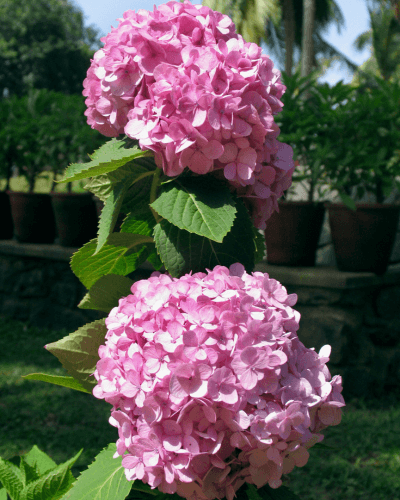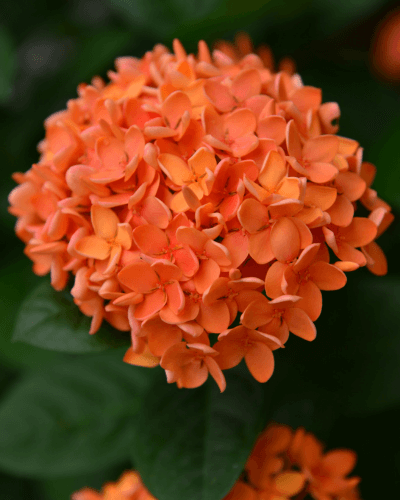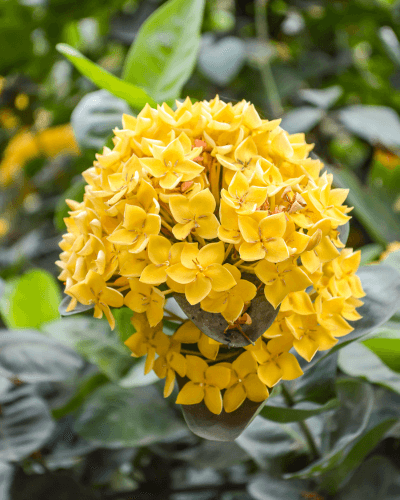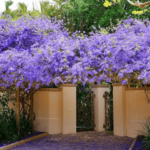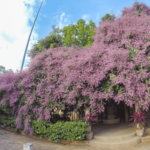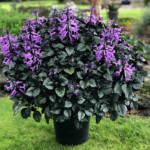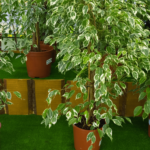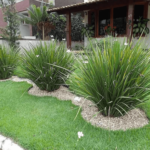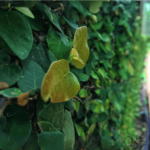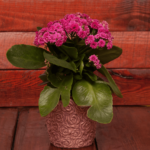Ixora is a genus of perennial plants that catch the attention of growers in various places around the world due to the colors of their flowers.
Known by several popular names such as West Indian jasmine, flame of the woods or jungle geranium, I believe the images below will show you the reason why these plants are famous.
In addition to being beautiful, Ixoras are plants considered easy to cultivate for those who live in tropical zones and can be easily multiplied.
In this article, I will explain the secrets to successfully grow this plant, as well as show the main characteristics and curiosities about them.
How to Care
If you live in a tropical region, growing these plants will be much simpler.
Below I will explain in more detail all the care you need to take with your West Indian Jasmine so that it grows healthy and ready to bloom a lot.
Ideal Climate
Before understanding where you can plant, or even when you need to water or fertilize your plants, it’s important to learn about the ideal climate for developing it.
Speaking of the ideal lighting for this plant, Ixora prefers to be cultivated receiving direct sunlight, with the ideal being 8 to 10 hours of sunlight per day.
Regarding temperature, Ixora has low resistance to cold climates, so protect it from frosts.
Days with temperatures below 15°C (59°F) can harm the development of this plant.
The ideal is to keep it between 15°C to 27°C (59°F to 80.6°F).
It likes humid places and should be protected from cold drafts. On very dry days you can spray water on the leaves of this plant to increase humidity.
Recommended articles:
- Spanish Moss: Care, Characteristics and Curiosities
- Hornwort (Ceratophyllum demersum): How to Care
- Columnea: Varieties, How to Care and Propagate
- Orchid Care for Beginners: Quick and Easy 7-Step Guide
- How to Care for Ferns in 9 Steps (For Beginners)
Where to Plant and How to Water
Normally this plant is cultivated outside the house in gardens, also being widely used as a live fence.
They can be planted in pots or directly in the ground.
Remember that when choosing your Ixora for planting, check the average height that your plant can reach, as some species can grow over 2.5 meters (8.2 feet) tall.
The ideal soil for this plant must have good drainage and lots of organic material, with an ideal pH between 5 and 6.5.
Regarding watering, Ixora needs to be watered regularly.
This plant likes moist soils but not waterlogged, so it’s common for it to be watered daily during spring and summer.
How to Fertilize
The species of Ixora are plants that do not demand high soil fertility or complex maintenance.
Therefore, when fertilizing them be careful not to overdo it.
It’s important to choose fertilizers made specifically for acid-loving plants, as Ixora develops better in slightly acidic soil environments.
The frequency of fertilization should follow the manufacturer’s instructions, preferably fertilizing at the beginning of spring, to coincide with the plant’s growth cycle.
During your choice, avoid fertilizers with a high nitrogen content, as although they help leaf growth, they can interfere with the flowering of West Indian Jasmine, one of its main attractions.
Organic fertilization can be a good option for this plant.
In this case, use bone meal or manure, as these materials enrich the soil with essential nutrients in a more natural and balanced way, providing the plant with a healthier growth environment.
How to Prune and Multiply
Pruning the tips of your Ixora is important to stimulate growth and to maintain the shape of your plant.
It should be done especially after flowering with sterilized scissors.
The multiplication of your Ixora can be done through cuttings or by seeds.
Multiplication by seeds is slow and inefficient, so below I will explain in more detail how to perform the cutting technique to multiply your Ixora.
First, know that this procedure should be done in spring, taking advantage of the plant’s growth period.
- To begin, cut healthy branches from the adult plant.
- These branches should be young, but already developed enough (10 to 15 cm / 3.9 to 5.9 inches).
- After making the cut, these cuttings can be initially rooted in water. This option helps in observing the development of the roots.
- After the roots appear, the seedlings should be replanted to an acidic substrate, which is more conducive to the growth of Ixora.
Extra tips:
- The application of rooting hormone on the cuttings can significantly increase the chances of success in the rooting process.
- Avoid replanting your Ixoras during the flowering period, as this can stress your plant.
- I found a study on mini ixora (Ixora coccinea ‘compacta’) where the best soil for rooting cuttings was sand.
Common Pests
Ixoras are resistant plants that, when well cultivated, live several years in good health.
But, it’s important to understand that just like other plants, Ixoras can also be attacked by pests and diseases, and the most common pests that attack this plant are:
- Spider mites
- Aphids
Their control can be done in a homemade way, and to avoid these problems, keep your cultivation area always clean and with good humidity.
Plant Characteristics
Belonging to the Rubiaceae family, Ixora species are found in Asia in warm climate locations.
In some cultures, Ixora leaves are used medicinally, while its flowers are used for religious purposes and also for assembling garlands and bouquets.
Despite its medicinal use in some cultures, ixora is considered a toxic plant and should not be consumed.
During spring and summer, the flowers of these species appear, which are showy, attract butterflies, bees, and hummingbirds, and can also be of various colors:
- Yellow
- Red
- Orange
- Pink
Their size can vary depending on the species, for example, the mini ixora does not reach 1 meter, while other species can exceed 2.5 meters (8.2 feet).
Types of Ixora
Below I will talk a little about the 3 most known and cultivated species of Ixora.
- Chinese Ixora: Ixora chinensis is native to China and can reach up to 2 meters (6.6 feet) in height. Its leaves are dark green and shiny, while its flowers can be of various colors. This plant is widely cultivated outdoors, especially as a live fence.
- Mini Ixora: also known as jungle flame, Ixora coccinea ‘compacta’ can reach 30 to 60 cm (1 to 2 feet) in height. Its flowers are small, numerous, and dense, creating a showy appearance.
- Ixora King: also known as Ixora Macrothyrsa, is found in India, Sri Lanka, and Malaysia. It can reach up to 2 meters (6.6 feet) in height. Its flowers have a star shape and are yellow.
Did this text help you? Then leave a comment below and also share it on your social networks.


